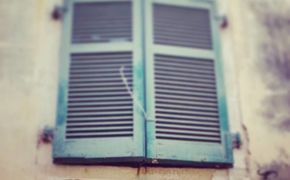On 13 October 2020, the Policy Learning Platform held an online EU Regions Week participatory lab on ‘Reuse and Repair in a circular economy’. Various good practices developed by Interreg Europe projects - such as INTHERWASTE, RETRACE, SUBTRACT, RaiSE, 2LIFES and ECOWASTE4FOOD - were showcased as inspiring examples on how reuse and repair can boost waste prevention and give impetus to the social economy. Having a huge job creation potential, they should be at the core of any local and regional initiative to favour the shift towards circularity in socially inclusive manner.
This is proved for instance by the Brussels-based Les Petits Riens, a good practice that every year allows the collection of around 8,000 tons of material, employs 300 people and offers an equal number of volunteering and training opportunities. Jana Zurkova, Network Development and Innovation Manager at RREUSE, underlined that 'Reuse and preparing for reuse can spare one third of items collected at municipal waste collection points from premature recycling, landfilling and incineration. At the same time, we are estimating that reuse and repair of just 1% of municipal waste can create 200,000 local jobs in Europe.'
Luigi Martignetti, REVES’s Secretary General, supported this message and added that 'Reuse and repair are not only an opportunity for waste prevention and job creation. They also help ensuring that benefits and resources are kept at local level and that wellbeing and the quality of life of citizens can improve, both in the territories and beyond.'
Key Learnings
From this participatory lab, we can highlight some major insights for regional policymakers on reuse and repair in a circular economy:
- Incentivising reuse and repair is key for saving resources and for fostering waste prevention. Evidence gathered from interregional cooperation shows that reuse and repair centers can be scaled-up and become networks as illustrated by the case of CPU reuse and repair network in Slovenia. Besides waste prevention, they have a tangible social impact by offering employment and providing free access to essential items, often for vulnerable groups. Reuse and repair centres become increasingly popular and the example of ‘Les Moulins’ in Nice has shown that the relevant policy measures can easily be transferred to a different location. To really become ‘the new normal’, reuse and repair centres must be taken up more broadly by local and regional authorities, who have the competences to enable a natural ecosystem for reuse.
- As shown by the Vakin Reuse shop & seweing service, reuse and repair are labour-intensive and provide a suitable platform for labour market programme which give economic stability to reuse business models, social entrepreneurship ecosystems and social enterprises (SEs) that thrive if public sector improvements are made. Public-private partnerships need to be formed, so that the public sector can assign specific tasks to SEs, providing revenue streams for sustaining their activities. Social criteria should be included in public tendering with the view to give recognition to SEs for creating positive social impact through their services. Interregional learning on social entrepreneurship support models is nurtured by rich traditions. When transferring a good practice, the social welfare context of a region must be duly considered.
- Digital tools are not a goal in themselves but a way for creating new on-line and physical marketplaces which make supply meet demand of valuable items that would otherwise go to waste. Whether conceived for marketing edible surplus food portions at a discounted price (RESQ Club) or enabling the collection, storage and free-of-charge pick-up of items prepared for reuse in ad hoc centres (EMULSA Reuse Space and App), there is a clear business case for their development, as the technological backbone of a new social re-use economy. While highly transferable at relatively low-cost, the potential of reuse apps and platforms is still untapped. If supplemented by concrete actions from local and regional authorities for raising awareness and unlocking behavioural change, they can help move up the waste hierarchy more substantially towards reuse.
Presentations
Find some parts of the recording at the Replay section of the official #EURegionsWeek2020 website. All presentations from the reuse and repair participatory lab are available below:
- The Policy Platform services by Elena Ferrario from the Interreg Europe Policy Learning Platform
- Reuse and repair centre 'Les Moulins' in Nice (France) by Erneszt Kovacs from ACR+ (INTHERWASTE project)
- A network of reuse centres in Slovenia by Marinka Vovk from CPU Reuse Centre (RETRACE project)
- Regional development strategy and procuring services from social enterprises in Örebro region by Anders Bro from RE:FORM, Region Örebro County (RaiSe project)
- Reuse shop and textile services as a part of the Umeå Labour Market programme by Johanna Cory from Vakin, a Municipality-owned water and waste company (SUBTRACT project)
- Zero food waste by Sauli Böhm from ResQ Club (ECOWASTE4FOOD project)
- Reusapp by Sergio de Lucas from EMULSA (2LIFES project)









